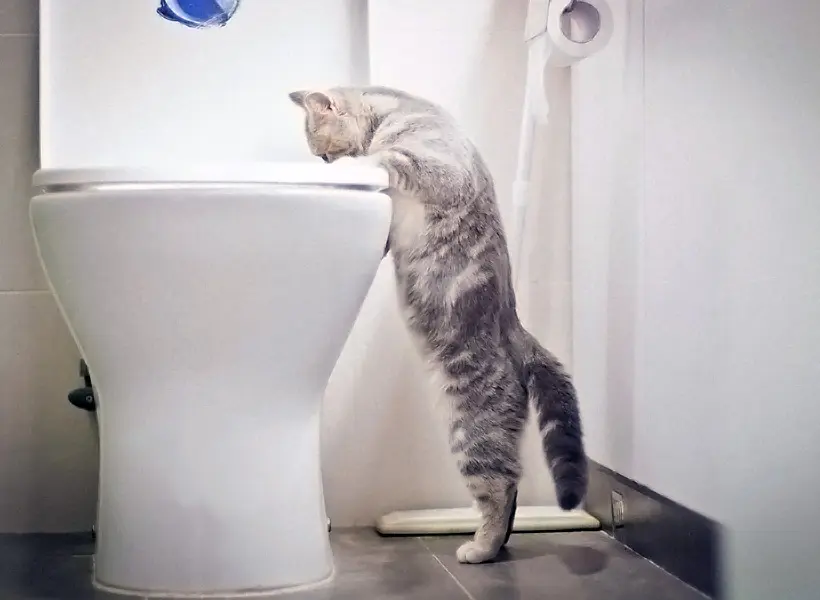Reasons Flushing Cat Poop Down Your Toilet Isn't a Good Idea - Tips for Safer Disposal
Reasons Flushing Cat Poop Down Your Toilet Isn't a Good Idea - Tips for Safer Disposal
Blog Article
Nearly everybody may have his or her own idea about Don’t flush cat feces down the toilet.

Introduction
As pet cat owners, it's essential to bear in mind how we take care of our feline good friends' waste. While it might seem practical to flush pet cat poop down the bathroom, this technique can have harmful effects for both the setting and human health and wellness.
Environmental Impact
Purging feline poop presents hazardous microorganisms and parasites into the water supply, positioning a considerable risk to marine communities. These contaminants can adversely affect aquatic life and compromise water quality.
Health and wellness Risks
In addition to ecological issues, flushing feline waste can likewise position wellness risks to people. Pet cat feces might have Toxoplasma gondii, a parasite that can create toxoplasmosis-- a potentially serious disease, particularly for pregnant ladies and individuals with damaged body immune systems.
Alternatives to Flushing
The good news is, there are much safer and extra accountable means to get rid of feline poop. Consider the following alternatives:
1. Scoop and Dispose in Trash
The most typical technique of dealing with feline poop is to scoop it right into a naturally degradable bag and throw it in the trash. Make certain to utilize a specialized trash inside story and deal with the waste promptly.
2. Usage Biodegradable Litter
Go with biodegradable cat trash made from materials such as corn or wheat. These litters are eco-friendly and can be safely disposed of in the garbage.
3. Hide in the Yard
If you have a yard, take into consideration burying feline waste in a designated area far from veggie yards and water resources. Make sure to dig deep adequate to avoid contamination of groundwater.
4. Set Up a Pet Waste Disposal System
Buy a family pet waste disposal system particularly developed for feline waste. These systems use enzymes to break down the waste, minimizing odor and environmental impact.
Final thought
Liable family pet ownership expands beyond giving food and shelter-- it also involves proper waste administration. By avoiding purging cat poop down the bathroom and opting for alternate disposal approaches, we can minimize our ecological footprint and protect human health.
Why Can’t I Flush Cat Poop?
It Spreads a Parasite
Cats are frequently infected with a parasite called toxoplasma gondii. The parasite causes an infection called toxoplasmosis. It is usually harmless to cats. The parasite only uses cat poop as a host for its eggs. Otherwise, the cat’s immune system usually keeps the infection at low enough levels to maintain its own health. But it does not stop the develop of eggs. These eggs are tiny and surprisingly tough. They may survive for a year before they begin to grow. But that’s the problem.
Our wastewater system is not designed to deal with toxoplasmosis eggs. Instead, most eggs will flush from your toilet into sewers and wastewater management plants. After the sewage is treated for many other harmful things in it, it is typically released into local rivers, lakes, or oceans. Here, the toxoplasmosis eggs can find new hosts, including starfish, crabs, otters, and many other wildlife. For many, this is a significant risk to their health. Toxoplasmosis can also end up infecting water sources that are important for agriculture, which means our deer, pigs, and sheep can get infected too.
Is There Risk to Humans?
There can be a risk to human life from flushing cat poop down the toilet. If you do so, the parasites from your cat’s poop can end up in shellfish, game animals, or livestock. If this meat is then served raw or undercooked, the people who eat it can get sick.
In fact, according to the CDC, 40 million people in the United States are infected with toxoplasma gondii. They get it from exposure to infected seafood, or from some kind of cat poop contamination, like drinking from a stream that is contaminated or touching anything that has come into contact with cat poop. That includes just cleaning a cat litter box.
Most people who get infected with these parasites will not develop any symptoms. However, for pregnant women or for those with compromised immune systems, the parasite can cause severe health problems.
How to Handle Cat Poop
The best way to handle cat poop is actually to clean the box more often. The eggs that the parasite sheds will not become active until one to five days after the cat poops. That means that if you clean daily, you’re much less likely to come into direct contact with infectious eggs.
That said, always dispose of cat poop in the garbage and not down the toilet. Wash your hands before and after you clean the litter box, and bring the bag of poop right outside to your garbage bins.
https://trenchlesssolutionsusa.com/why-cant-i-flush-cat-poop/
I ran across that blog post about Don’t flush cat feces down the toilet when exploring the search engines. Enjoyed reading our write-up? Please share it. Help others locate it. We love reading our article about Can You Flush Cat Poop Down The Toilet?.
Click Here Report this page